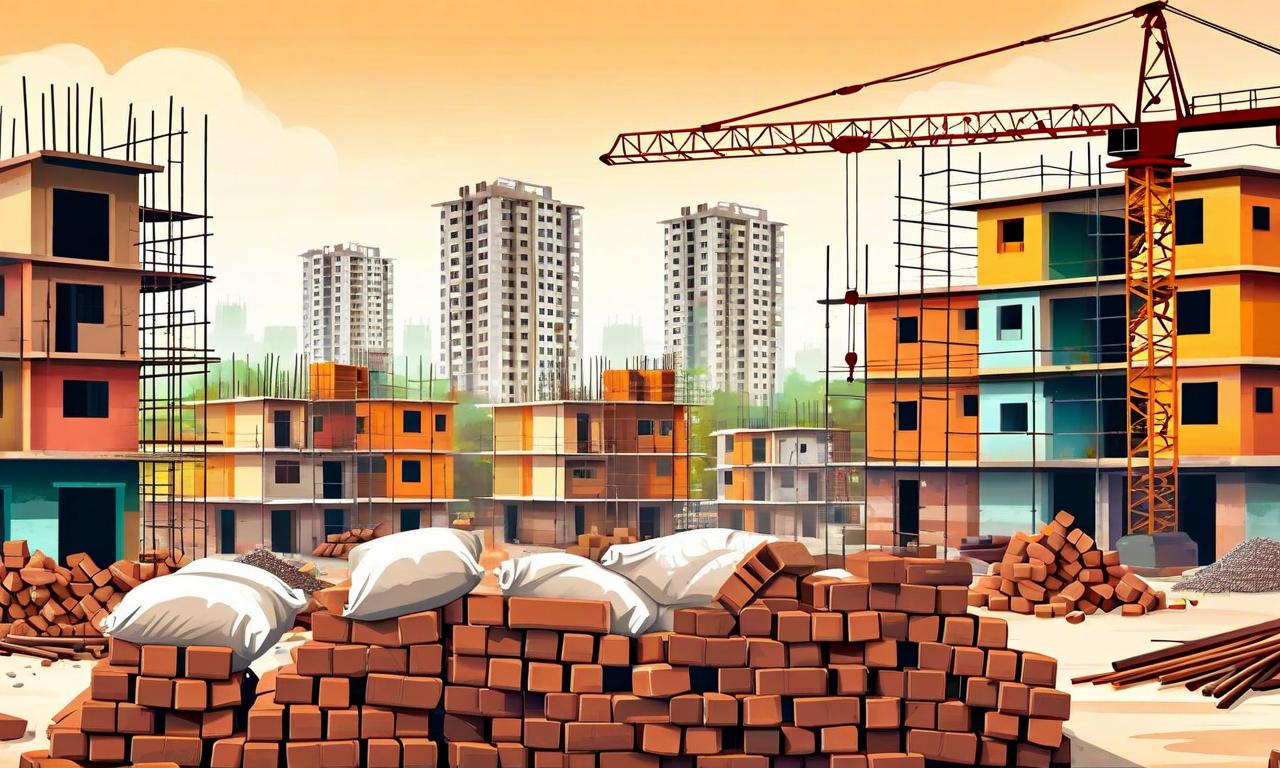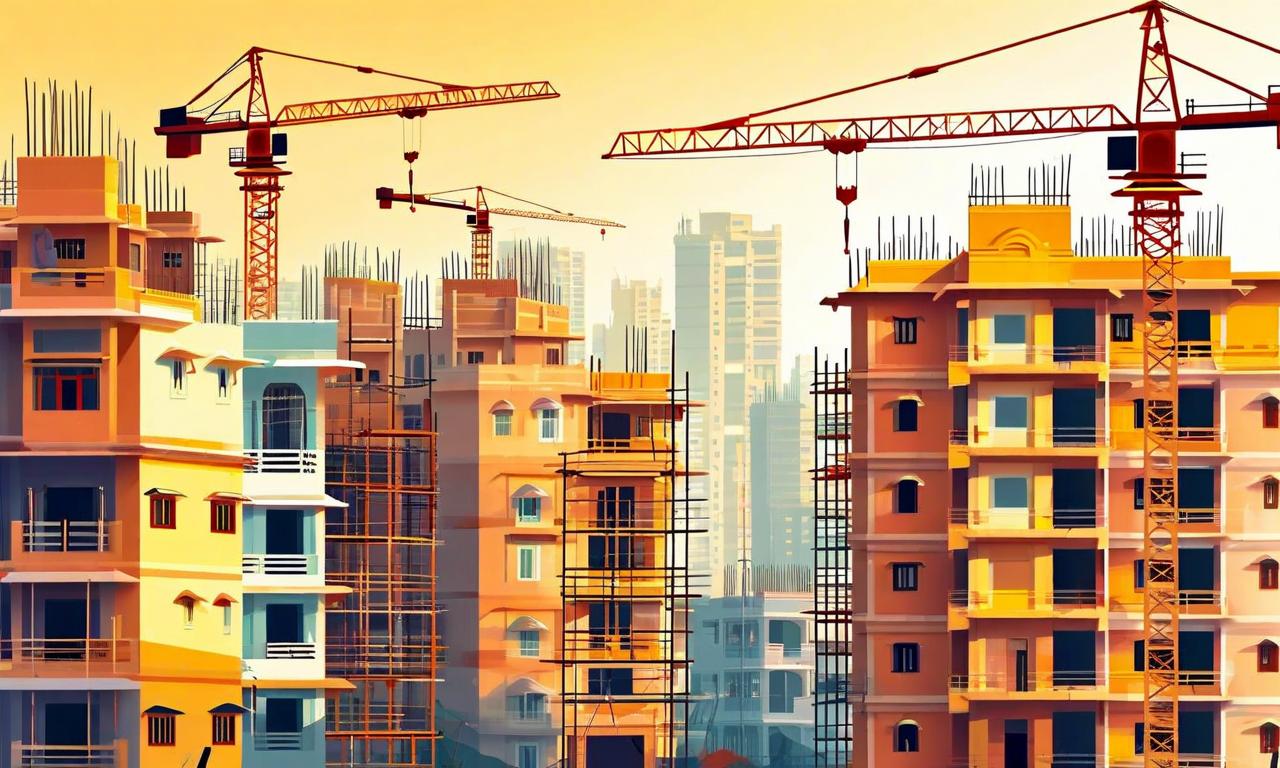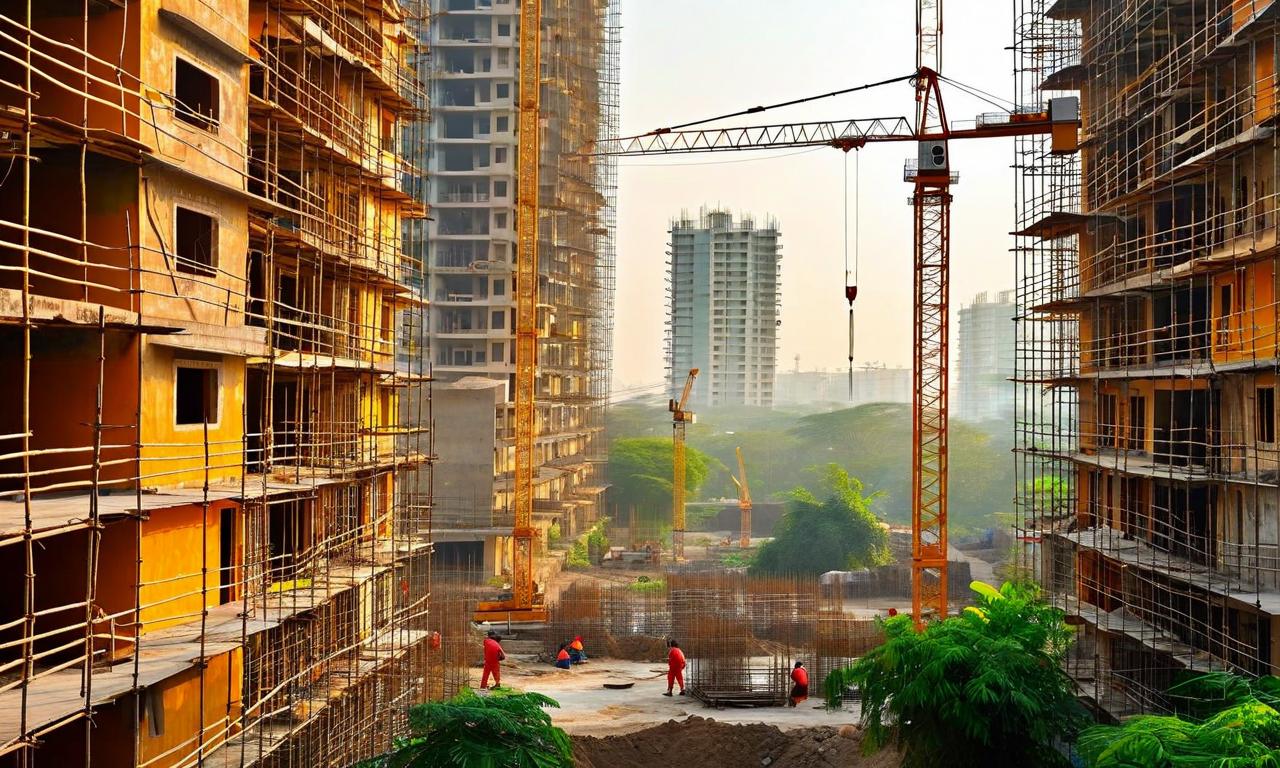India's Affordable Housing Supply Plummets Amid Soaring Construction Costs
India's affordable housing sector is facing a severe crisis due to skyrocketing construction costs. The segment's share in overall housing supply has dropped from 40% to 12%. Construction costs have increased by 40% over five years, with a 27.3% rise in three years. Labor wages have surged 150%, with a 25% increase in the past year. Material costs, including steel, cement, and copper, have risen significantly. The crisis has led to a market shift, with developers focusing on mid-range and luxury projects. Potential relief may come from proposed GST reforms, which could reduce affordable housing prices by 2-4%.

*this image is generated using AI for illustrative purposes only.
India's affordable housing sector is facing a severe crisis as construction costs skyrocket, leading to a significant drop in supply. The segment, once a cornerstone of the country's real estate market, has seen its share of overall housing supply plummet from 40% to a mere 12%.
Sharp Rise in Construction Costs
The affordable housing segment has been hit hard by a staggering 40% increase in construction costs over the past five years. More alarmingly, a sharp 27.3% rise was observed over a three-year period, putting immense pressure on developers and buyers alike.
Key Factors Driving Cost Increases
Several factors have contributed to the surge in construction costs:
- Labor Wages: Labor wages have seen a dramatic 150% increase, with a 25% rise in the past year alone.
- Material Costs: Over a five-year period, steel and cement prices have risen by 30-57%, while copper prices have jumped by an astounding 91%.
Regional Cost Variations
The impact of these cost increases varies across different cities:
| City | Construction Cost Range (per sq ft) |
|---|---|
| Kolkata | Rs 1,500 - Rs 2,500 |
| Mumbai | Rs 2,500 - Rs 4,500 |
Market Shift and Buyer Impact
The rising costs have forced a significant shift in the real estate market:
- Affordable housing's share of overall supply has dropped from 40% to 12%
- Sales share in the affordable segment has declined from 38% to 18%
- Developers are increasingly focusing on mid-range and luxury projects
- Affordable housing buyers are unable to absorb price hikes of Rs 500-800 per sq ft
Potential Relief on the Horizon
While the situation looks grim, there may be some relief in sight:
- Proposed GST reforms could potentially reduce affordable housing prices by 2-4%
- Suggestions include reinstating input tax credit and reducing cement GST from 28% to 18%
These measures, if implemented, could provide some much-needed support to the struggling affordable housing sector.
As the Indian real estate market continues to evolve, the affordable housing segment faces significant challenges. The coming months will be crucial in determining whether policy interventions can help revive this once-thriving sector and make the dream of homeownership more accessible to India's growing middle class.


























